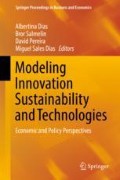Abstract
In Portugal, as in Europe, there are several different technologies to sort and treat the different components of municipal solid waste (MSW). For treatment of the organic fraction of MSW (OFMSW) there are also several technological options. The Anaerobic Digestion (AD) technology is a well-known solution in Portugal, with several AD plants working at their full capacity. However, the technology between plants differs, and with it, its operation, maintenance and biogas production results.
To control and operate an anaerobic digestion process a lot of factors have to be taken into account. As with all biological processes, the optimum conditions are essential. The AD process has a rapid response to any changes, such as changes in the feeding, temperature and O2 addition (sometimes needed in small quantities (less than 1%) to decrease the H2S amount in the digesters). If the feeding stops, for any maintenance of the pumping system or an unforeseen problem, the pH decreases, the volatile fatty acids increase and the biogas production abruptly decreases, also decreasing, if the normal feeding is not restored in a short period, the methane content and increasing the H2S content. This kind of instability, as common as it can be in a plant operation, is highly unfavorable for the process and increases the operating costs by reducing plant revenue.
Other factors, mainly in the pretreatment, have to be considered, such as a good system of glass and grit removal especially in a wet treatment, which will prevent damaged pumps, clogging, and extremely high maintenance costs.
If the AD technology is based on a low solids content feeding, the plant will have a lot of piping and pumps, so the right project calculations for size and capacity are mandatory to decrease the costs. Arranging the different equipment in the plant to decrease the pumping distance will prevent capital costs in pumps and piping and will also prevent difficult clogging situations. To plan and design a simple piping system, with as little curves and short piping as possible, will prevent high maintenance costs and a lot of plant stops due to clogging.
References
Faria T et al. (2013) Anaerobic digestion of MSW – opportunities and challenges. VIII Jornadas Técnicas Internacionais de Resíduos. Lisboa.
PERSU 2020, Plano Estratégico para os Resíduos Sólidos Urbanos, 2014, MAORT
PERSU II, Plano Estratégico para os Resíduos Sólidos Urbanos, 2007–2016, MAORT, 2007, ISBN: 978-989-8097-01-9
Hartmann, H, Ahring, BK (2006) Strategies for the anaerobic digestion of the organic fraction of municipal solid waste: an overview. Water Science and Technology 53(8):7–22
Author information
Authors and Affiliations
Corresponding author
Editor information
Editors and Affiliations
Rights and permissions
Copyright information
© 2018 Springer International Publishing AG
About this paper
Cite this paper
Moura, I., Pereira, D. (2018). Anaerobic Digestion of MSW: Challenges of a High Cost Technology. In: Dias, A., Salmelin, B., Pereira, D., Dias, M. (eds) Modeling Innovation Sustainability and Technologies. Springer Proceedings in Business and Economics. Springer, Cham. https://doi.org/10.1007/978-3-319-67101-7_22
Download citation
DOI: https://doi.org/10.1007/978-3-319-67101-7_22
Published:
Publisher Name: Springer, Cham
Print ISBN: 978-3-319-67100-0
Online ISBN: 978-3-319-67101-7
eBook Packages: Economics and FinanceEconomics and Finance (R0)

